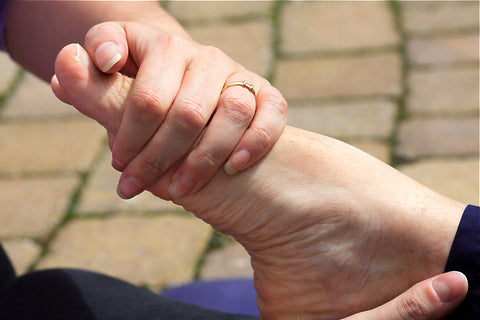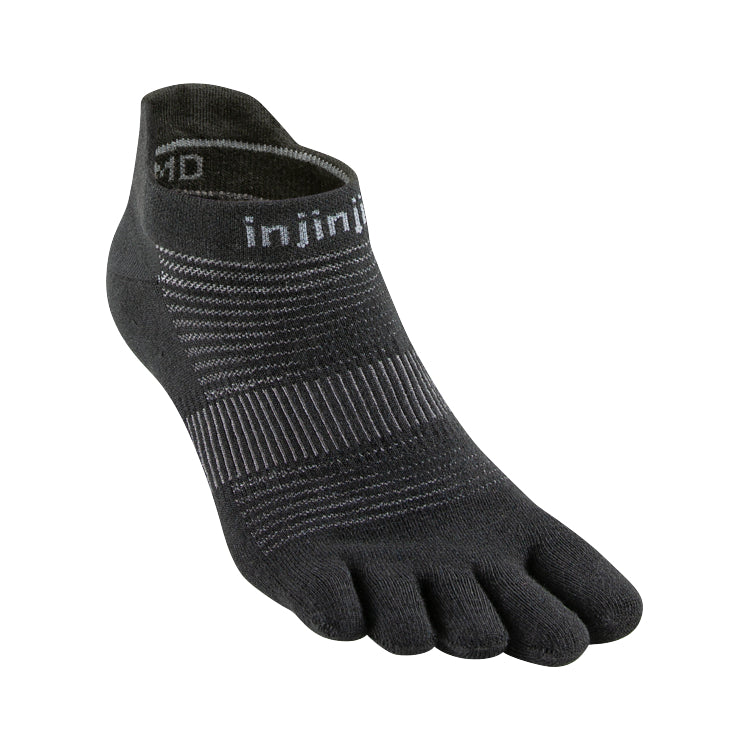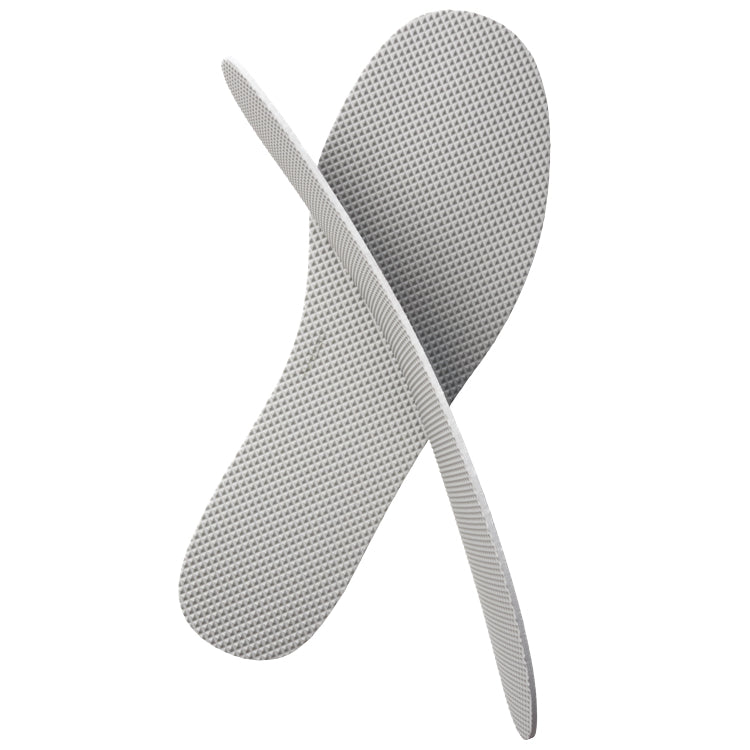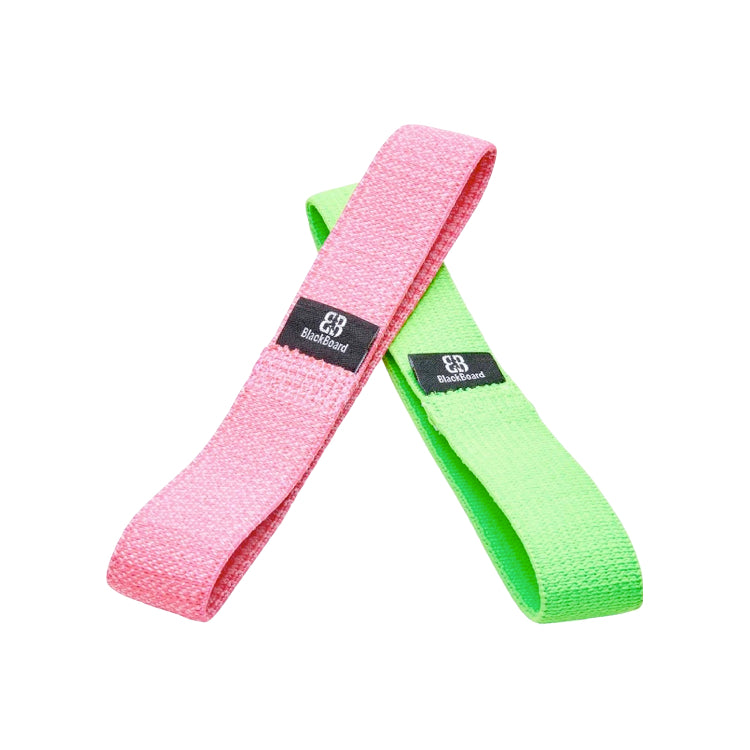
Your feet are one of the most important parts of your body. They accept and disperse tremendous forces during standing, walking, and running (e.g., walking 1 mile places 60 tons of stress on each foot), and they possess extraordinary strength, integrity, and endurance. Although your feet are resilient and capable of bearing considerable forces, too much stress can cause pain or discomfort—especially if your foot is held in a deformed or compromised position within your shoe. Foot pain may be located in one or more of three distinct places:
1. Forefoot2. Midfoot3. Rearfoot
1. Forefoot Pain
Your forefoot is approximately the anterior third of your foot and is composed of your metatarsal bones and phalanges and their respective joints. Forefoot pain or discomfort is usually felt toward the end of the foot, either in the ball of the foot or in the toes. The rate of forefoot pain and deformity increases with age, especially in individuals who have worn conventional footwear for many decades. The following conditions are all possible causes of forefoot pain: arthritis, athlete's foot, blisters, broken toes, bunionettes, bunions, capsulitis, corns and calluses, gout, hallux rigidus, hammertoes, ingrown toenails, metatarsal fractures, neuromas, plantar warts, Raynaud's, and sesamoiditis. When a definitive cause of ball of foot pain cannot be determined, the pain is usually referred to as “metatarsalgia.” Forefoot pain can be caused by traumatic injury or from wearing shoes that are too narrow. Shoes that possess wide toe boxes allow your toes and forefoot sufficient room to spread and help reduce your likelihood of experiencing forefoot pain.
2. Midfoot Pain
Your midfoot is approximately the middle third of your foot and is composed of your tarsal bones and their joints. Your midfoot also contains a significant portion of your medial longitudinal arch, your foot's primary arch. The causes of midfoot pain are numerous. A non-exhaustive list of problems associated with the midfoot include: blisters, extensor tendinitis, flat feet, lateral plantar nerve entrapment, peroneal tendinopathy or tendinitis, pes caves, sinus tarsi syndrome, stress fractures, tarsal coalition, tibialis posterior syndrome, tibialis posterior tendinopathy, and various ligament sprains. Because midfoot pain can be severely debilitating and significantly affect your activities of daily living, treatment is often necessary. The type or underlying cause of midfoot pain dictates the kind of treatment you will receive. Most types of midfoot pain can be treated using conservative therapies.
3. Rearfoot Pain
Your rearfoot is approximately the posterior third of your foot and is composed of your calcaneus and talus bones and their associated joints. In shoe-wearing populations, the heel is usually the first part of the foot to strike the ground during gait, which places a significant amount of force on the heel and its associated structures and tissues. Heel pain is one of the most common types of foot pain in adults, and it may occur from the use of inappropriate footwear or as a result of traumatic injury. Rearfoot or heel pain may be caused by the following health problems: Achilles tendinosis, arthritis, blisters, bruised heels, bursitis, calcaneal stress fractures, medial calcaneal nerve entrapment, plantar fasciosis, Sever's disease, and tarsal tunnel syndrome. Heel pain occurs in both heels in less than 30 percent of heel pain cases—an important fact that can help physicians diagnose rearfoot conditions.
Conclusion
The specific location of foot pain is usually where the problem lies, though in some cases, foot pain or other symptoms may be caused by problems in a different part of the foot, lower leg, or even the lower back. It's important to seek the help of a trusted foot care professional to have your problem assessed and treated properly. Because some underlying causes of foot pain may be serious, it's best to seek help in a timely manner to prevent additional problems or complications down the line.

WANT TO IMPROVE YOUR FOOT HEALTH?
Let the team at Natural Footgear help you! Subscribe to our newsletter for the latest offers and helpful info, and sign up for our FREE email courses on various topics and foot health conditions.
Sign Up →
Want to Improve Your Foot Health?
We are here to help you every step of the way. Get our newsletter for the latest offers and helpful info, and sign up for our FREE email courses on various topics and conditions, including bunions, hammertoes, neuromas, plantar fasciosis, shin splints, ingrown toenails, and more.
Sign Up →
 There are many common causes of foot pain, especially in runners—plantar fascia problems, sesamoiditis (irritation of small bones under the base of the big toe), heel spurs, and Achilles tendinosis among them. Ingrown toenails and bunions may also cause foot pain. Fractures and other traumatic injuries can cause foot pain, too. The exercises described below may help rehabilitate your foot, improve its function, and reduce pain, especially when performed in...
Read more
There are many common causes of foot pain, especially in runners—plantar fascia problems, sesamoiditis (irritation of small bones under the base of the big toe), heel spurs, and Achilles tendinosis among them. Ingrown toenails and bunions may also cause foot pain. Fractures and other traumatic injuries can cause foot pain, too. The exercises described below may help rehabilitate your foot, improve its function, and reduce pain, especially when performed in...
Read more












I’m suffering from sesamoiditis. Are there any natural treatment approaches available to me?
Thank you for your question, Peter! We’re sorry to hear that you’re suffering from sesamoiditis. We understand how painful this problem can be and the degree to which it can affect your ability to perform weight-bearing activities. Considering the relatively small size of the sesamoid bones, the discomfort that’s sometimes associated with them can have an outsized effect on your well-being and quality of life. Fortunately, we’ve found that natural treatment approaches can be quite helpful for this problem in many cases. We’ll list some conservative care approaches here, but first, a little background on this common foot and toe issue.
Sesamoiditis occurs when the two floating bones beneath the base of the big toe (corn kernel-sized bones called sesamoids) are forced to deviate from their natural position and then become inflamed or irritated. Sesamoiditis is an overuse injury that involves chronic, or long-term, inflammation of the sesamoid bones and the tendons that act on these bones. Conventional footwear plays a prominent role in aggravating the sesamoids and their surrounding structures. Shoes with tapering toe boxes and toe spring can cause the sesamoids to become dislocated, causing dysfunction. When the hallux, or big toe, is properly aligned with the first metatarsal bone, the sesamoids are also properly aligned in their grooves and function as nature intended.
In our experience, we’ve found the following noninvasive methods to be helpful in resolving sesamoiditis:
Shoe Therapy: Wearing foot-healthy footwear that permits proper toe splay, and therefore a more even distribution of bodyweight across the forefoot, can be a good frontline approach to addressing this problem.
Correct Toes: Wearing Correct Toes toe spacers helps enable optimal toe splay and bodyweight distribution across the forefoot.
Immobilization: Temporarily placing the affected foot in a conventional cast or a removable walking cast can help the injured or irritated tissues rest and recover. Crutches can help reduce the amount of force on the sesamoids and may be helpful in some cases.
Taping or Strapping: Taping or strapping the involved toe may help reduce tension on the sesamoid bones.
Padding: Adding a special pad inside the shoe can help cushion the sesamoid bones. This pad, called a metatarsal pad, helps return the forefoot fat pad to a position that supports and protects the sesamoids.
Physical Therapy (PT): PT is an important treatment measure for sesamoiditis, especially following immobilization. Range-of-motion exercises and ultrasound therapy are among the most commonly used PT modalities for this health purpose.
For more info about natural strategies to address sesamoiditis, we recommend that you check out our blog post called Sesamoiditis: Conventional vs. Natural Approaches (www.naturalfootgear.com/blogs/educational-articles/sesamoiditis-conventional-vs-natural-approaches). Also, just FYI: Anti-inflammatory medication and cortisone injections are more aggressive approaches for treating sesamoiditis, though they may be necessary in some individuals. A foot care professional may also recommend surgery, including sesamoid bone removal, if conservative care measures fail to resolve this health problem.
Of course, it’s always important to be evaluated by a foot care practitioner to better understand the underlying nature of the problem and to receive the most personalized care possible. And we always recommend doing so before adopting any active measures intended to address or prevent foot and toe problems, including sesamoiditis. We hope this info helps! Please let us know if you have any follow-up questions.
Yours in Foot Health,
Drs. Marty & Robyn Hughes